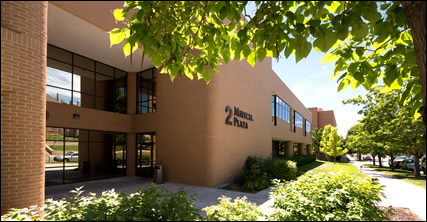Orbital Hypertelorism
Orbital hypertelorism represents an increased interorbital distance and is most commonly associated with craniofacial dysostosis (Apert’s and Crouzon’s diseases), encephaloceles, facial clefts, and fronto-nasal dysplasias. The treatment of moderate to severe deformities involves surgery to reduce the interorbital distance and to correct any nasal abnormalities by way of an intracranial surgical approach that releases the bony orbits of the eyes and repositions them closer together. Inlay bone grafts, secured in place with miniplate fixation, are then placed to provide structural support and to fill the spaces left by moving the orbits.








The ideal timing for this surgery is between two and five years of age in order for the psychological trauma involved with the deformity to be minimized while maximizing the ophthalmological benefits. In cases where the deformity from hypertelorism is less severe, the surgery can be performed using an extracranial approach to achieve orbital rearrangement. However, it is generally agreed that using the intracranial technique constitutes a more consistent and safer method of correcting the malformation.


























